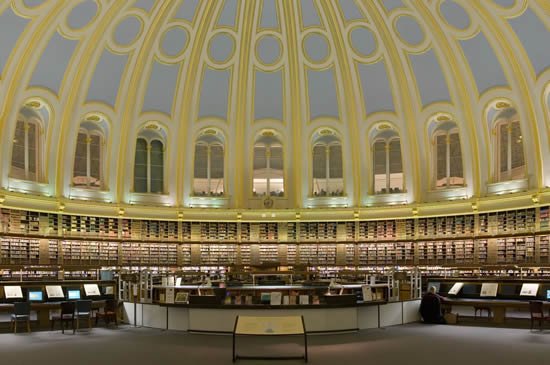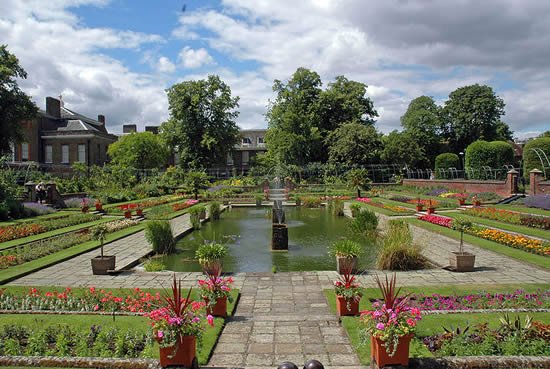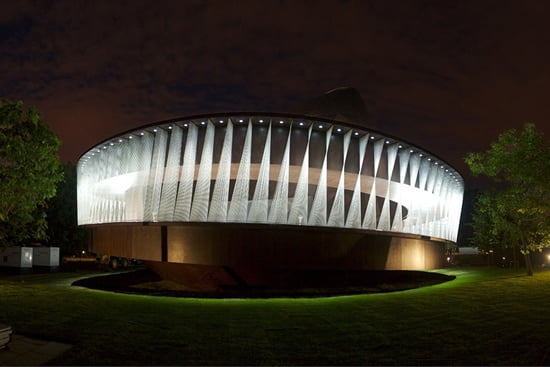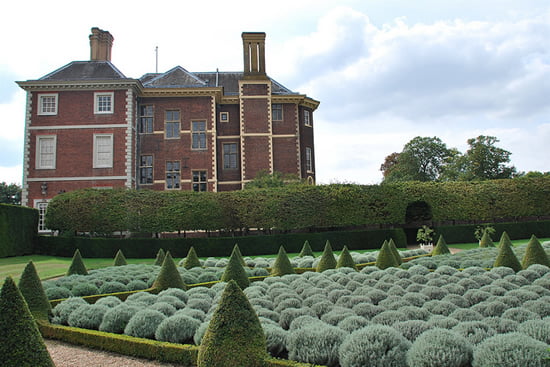Founded 2000 years ago, London is a world’s leading tourism destination that attracts 30 million international visitors per year thanks to its numerous famous attractions such as the Tower Bridge and the Big Ben. It is one of the culture capitals of the world, whether you prefer history or modern art, and boasts over 300 museums and galleries, as well as royal palaces. Among the best outdoor spaces of any city in the world, London’s parks must be on your list of top places to go when you visit London as well. Below you will find a list with the Top 30 Places in London.
1 – The Big Ben and the Houses of Parliament

Photo by: lorentey – Wikimedia Commons
The neo gothic Palace of Westminster, better known as the Houses of Parliament, and its Clock Tower, commonly called Big Ben, are among London’s most famous landmarks. The Clock Tower’s fame has surpassed that of the Palace itself. It is the largest four-faced chiming clock and the third-tallest free-standing clock tower in the world. The elegant tower is not open to the general public, but the views over it are spectacular, especially at night when the four clock faces are illuminated.
2 – Hyde Park

Photo by: Panos Asproulis – Wikimedia Commons
Hyde Park is one of the several royal parks in London connected to each other, forming one large green lung in the middle of the city. Divided in two by the artificial lake Serpentine, Hyde Park covers 142 hectares (350 acres) with over 4,000 trees, a lake, a meadow and horse rides. It is also a popular place for jogging, swimming, rowing and picnicking.
3 – National Gallery

Photo by: multiad.com.br
The National Gallery is one of London’s most important museums that houses the greatest collections of Western European painting in the world, with over 2,300 paintings dating from the period between 1260 and 1900. It is housed at Trafalgar Square, in an impressive neo-classical building, which itself offers all sorts of sculptural and decorative delights. The National Gallery was established for the benefit of all, not just the privileged. The paintings belong to the public and are on show 361 days a year, free of charge.
4 – Natural History Museum

Photo by: nyamamu – Flickr
The Natural History Museum is home to one of the largest natural history collections in the world, comprising some 70 million items of life and earth science specimens, including the ones collected by Darwin. The building itself is impressive with cathedral like structure, frescoes and sculptures. One of the museum’s biggest attractions is the exhibition of dinosaur skeletons as well as an enormous skeleton and model of a blue whale and several elephants.
5 – London Eye

Photo by: Mike Peel – Wikimedia Commons
The London Eye is a 135-metre (443 ft.) tall giant Ferris wheel situated on the banks of the River Thames, in the centre of London. When erected in 1999 for the London’s millennium celebrations, it was the tallest Ferris wheel in the world, and since then has become one of the iconic sights of London, visited by over 3.5 million people a year. The wheel carries 32 glass passenger capsules, each one offering 25 visitors great panoramic views over the city.
6 – Buckingham Palace

Photo by: jafitzgerald.ca
Buckingham Palace is the Queen’s official London residence and is used to receive guests on official occasions for the Royal Family. It is one of the few working royal palaces remaining in the world today. With over 77,000 m2 (830,000 sq. ft.) of floorspace, it has 775 rooms, and a large and park-like garden, which is the largest private garden in London. The states rooms are open to the public each year on August and September. The changing of the guard takes place daily at 11 o’clock in front of the Palace.
For booking options check here: Hotels in London
7 – British Museum

Photo by: espacoturismo.com
The British Museum is a museum of human history and culture that features one of the world’s most impressive archaeological collections. It is one of the largest museums in the world, with more than seven million objects from all continents, illustrating the story of human culture from its beginnings to the present. The centre of the museum was redeveloped in 2001 to become the Great Court: an indoor courtyard enclosed by a glass roof that surrounds the famed domed circular Reading Room.
8 – British Museum Reading Room

Photo by: User:Eneas – Wikimedia Commons
The British Museum Reading Room stands at the heart of the British Museum, in the centre of the Great Court. It is one of the most beautiful rooms in London and one of the most incredible Reading rooms in the world. In 1997, this function moved to the new British Library at St Pancras. It has been transformed into a special exhibition hall, but the Reading Room still remains in its original form. In the past, access was restricted to registered researchers only, and it received great names in history such as Karl Marx and Gandhi.
9 – Tower of London

Photo by: castlesineurope.blogspot.com
The Tower of London is a historical castle that was first built as a fortress. For over 900 years it has been standing guard over the capital as a Royal Palace, a prison, place of execution and torture and even a Royal Zoo. In the centre of the castle is the famous White Tower, which is the oldest part of the fortress. Today it is open to the public as a museum that houses the Crown Jewels with 23,578 gems in the collection, including the Koh-i-Noor, a 105 carat diamond, one of the world’s most famous diamonds.
10 – Royal Albert Hall

Photo by: David Samuel – Wikimedia Commons
The Royal Albert Hall is London’s historical entertainment hall and one of the top European performing arts venues. The circular hall of red brick with terra cotta ornamentation is one of the UK’s most treasured and distinctive buildings. Since its opening by Queen Victoria in 1871, the world’s leading artists from every kind of performance genre have appeared on its stage. It hosts performances that range from classical concerts, ballet and opera to rock and pop shows and award ceremonies.
11 – Tower Bridge

Photo by: .::Prad Patel::. – Flickr
The Tower Bridge is London’s most famous and one of the most recognizable bridges in the world. And this is not surprisingly, since it is a masterpiece of architecture that offers a stunning view over the city. It is the only movable bridge of the 29 bridges on the Thames River. And you can go inside it, where you’ll have a magnificent view over London from the walkway between the two bridge towers.
12 – Tate Modern

Photo by: Michal Louč – Wikimedia Commons
Tate Modern is the most-visited modern art gallery in the world, with around 4.7 million visitors per year. It displays works of international modern and contemporary art dating from 1900 until today. The galleries are housed in the former Bankside Power Station, a massive brick building vast inside. The dramatic Turbine Hall, which is 152 metres long, runs the length of the entire building. An iconic new building will be added at the south of the existing gallery, redefining the museum for the twenty first century.
For booking options check here: Hotels in London
13 – Westminster Abbey

Photo by: Marc Pinter – Flickr
Westminster Abbey is one of the world’s greatest churches and the most famous of all English abbeys. The coronation of Kings and Queens has taken place here since 1066, and many of them are buried there. With its oldest parts dating to the year 1050, this stunning Gothic Abbey contains some of the most glorious medieval treasures in London. Among many highlights are the medieval coronation throne; the memorials to Shakespeare and Charles Dickens; and the tombs of Queen Elizabeth I and Charles Darwin.
14 – Regent’s Park

Photo by: jpellgen – Flickr
Regent’s Park is one of the largest green areas in the heart of London and is home to an Open Air Theatre, the London Zoo and restaurants. It is one of London’s most popular parks, featuring gardens, a lake with a boating area, sports spaces and children’s playgrounds. The park covers 166 hectares (410 acres) and has an outer ring road and an inner ring road, which surrounds the Queen Mary’s Gardens, a rose garden with more than 30.000 roses. Primrose Hill offers fantastic views over Westminster and the city.
15 – St Paul’s Cathedral

Photo by: Laura Bittner – Wikimedia Commons
The majestic St Paul’s is London’s cathedral. Built between 1675 and 1710, its iconic dome, which is among the highest in the world, dominates the London skyline. It is built in the shape of a cross, and its main space is centred under the dome, which rises 108.4 meters from the cathedral floor and holds three circular galleries. The remarkable Whispering Gallery runs around the interior of the Dome and is famous for its acoustics, which makes a whisper against its walls audible on the opposite side.
16 – Holland Park

Photo by: Richard Thomas – Wikimedia Commons
Holland Park is about 22 hectares (54.36 acres) in area and is considered one of the most romantic and peaceful parks of central London due to the bucolic wooded walks and beautiful views. The park contains a famous Orangery, a giant chess set, a cricket pitch, tennis courts, a Japanese garden, a youth hostel, one of London’s best equipped children’s playgrounds, and large areas of woodland abundant with wildlife, including squirrels and peacocks.
17 – Trafalgar Square

Photo by: Diliff – Wikimedia Commons
Trafalgar Square is a public space and tourist attraction in central London and has been a central meeting place since the Middle Ages. At its centre is Nelson’s Column, which is guarded by four lion statues at its base. There are also a number of statues and two fountains in the square. It is used for political demonstrations and community gatherings, such as the celebration of New Year’s Eve. The square is surrounded by many great buildings, including the famous National Gallery.
18 – Somerset House

Photo by: julianhoare – Flickr
Somerset House is a large outstanding neoclassical building constructed between 1776 and 1801 in central London. It was extended by classical Victorian wings to north and south. The central courtyard features a beautiful fountain, and in the winter is home to an open-air ice rink. It is also used as a concert venue. The palace is now a visual arts centre, and is currently home to the Courtauld Gallery, The Gilbert Collection and the Hermitage Rooms.
For booking options check here: Hotels in London
19 – Imperial War Museum

Photo by: Joffley – Flickr
The Imperial War Museum in London was created in 1917 to collect and display material relating to World War I. Today the museum’s mission is enable people to understand the social effects of war, through poetry, photography and film footage. The largest exhibits focus on World War I and II, but other major conflicts involving Britain since 1945 are also covered including the Cold War, Korean War and the Gulf War. It displays many weapons of war, including rockets, tanks, guns and submarines.
20 – Richmond Park

Photo by: Keven Law – Wikimedia Commons
Richmond Park is a 2,360-acre (9.55 km2) park of natural beauty and wildlife despite its proximity to central London. Herds of red and fallow deer roam freely within much of the park. The park has a varied landscape of hills, woodland gardens and grasslands, and is a top UK site for ancient trees, particularly oaks. One of its highlights is the magical Isabella Plantation, which bursts with massive mounds of azaleas, rhododendrons, camellias and magnolias.
21 – Kensington Gardens

Photo by: Efarestv – Wikimedia Commons
Kensington Gardens is home to Kensington Palace, the peaceful Italian Gardens, Peter Pan statue, the stunning Albert Memorial and the modern art gallery “Serpentine Gallery”. Another popular attractions in the park are the Long Water, a large lake created from a string of ponds, the Round Pond, and the sunken garden. Covering an area of 111 hectares (275 acres), the park borders Hyde Park on the east and features several avenues of trees, grasslands and many types of wildlife.
22 – Serpentine Gallery

Photo by: wastedtalent.com.ar
Serpentine Gallery is one of London’s best-loved art galleries for modern and contemporary art. Located in Kensington Gardens, it attracts up to 800,000 visitors per year. Since 2000, each summer the gallery has commissioned worldwide leading international architects acclaim to design a pavilion on the gallery’s lawn that provides a unique showcase for contemporary architectural practice.
23 – Hampton Court Palace

Photo by: Andreas Tille – Wikimedia Commons
Hampton Court Palace is a royal palace in Greater London. One of its most impressive sights is the The Great Hall, England’s last and greatest medieval hall. The Chapel Royal, continuous in use for over 450 years, is outstandingly rich, colourful and layered with history. Outside you can test yourself and get enjoyably lost in ‘the most famous Maze in the history of the world’. The 60-acre palace’s gardens feature sparkling fountains, over 200,000 flowering bulbs and 750 acres of tranquil parkland.
24 – Hampton Court Maze

Photo by: math.nus.edu.sg
The Hampton Court maze is the most famous maze in the history of the world. Planted as part of the gardens laid out for William of Orange between 1689 and 1695 at Hampton Court Palace, it is the UK’s oldest surviving hedge maze and its unusual trapezoid shape covers a third of an acre and contains half a mile of paths. It is known for confusing and intriguing visitors for over 300 years, in search of what might lie at its centre, with its many twists, turns and dead ends.
For booking options check here: Hotels in London
25 – Greenwich

Photo by: bobmorton – Flickr
Greenwich is a World Heritage Site home of the Meridian Line. Its famous landmarks include the National Maritime Museum, one of the world’s most important and largest maritime museums, the Royal Observatory, home of the world’s Prime Meridian and of Greenwich Mean Time, the Old Royal Naval College, and the Queen’s House, which is an art gallery. The Greenwich Park is situated on a hilltop that offers impressive views. There are beautiful flower gardens, a boating lake and a children’s playground.
26 – Kew Gardens

Photo by: gardens-to-go.org.uk
The Kew Gardens is a 121-hectare garden in Greater London. It houses the earth’s largest and most diverse botanical collections and contains over 40 listed iconic buildings, as well as its impressive collection of glasshouses. Its most famous attractions are the Palm House, an iconic building that houses a tropical rainforest environment, the Treetop Walkway, which offers spectacular bird’s-eye view at 18 metres (59 ft.) high, and the Temperate House, home to the world’s tallest indoor plant.
27 – O2 Arena (Millennium Dome)

Photo by: Fatmonkey – Photobucket
The Millennium Dome is the original name of a large dome-shaped building, originally used to house a major educational exhibition celebrating the beginning of the third millennium. It is the largest of its type in the world. The dome still exists, and it is now a key exterior feature of The O2, a multifunctional sports and entertainment complex. It has twelve support towers, one for each hour of the clock face. In plan view it is circular, 365 m in diameter, one metre for each day of the year.
28 – The Gherkin (30 St Mary Axe)

Photo by: world-architects.com
The 30 St Mary Axe, known as the Gherkin for its unique design, is a skyscraper in London’s main financial district. With 40 floors, the tower is 180 metres (591 ft.) tall and is prominently visible over long distances in the city’s skyline. It has won a number of prestigious awards for architecture, both in terms of its striking appearance and eco-friendly services. It is said to use only half the energy of similar sized office towers. Despite not being open to the public, the view from the glass dome at the top of the building is breath-taking.
29 – The Red House

Photo by: stevecadman – Flickr
Red House is a house created and lived in by William Morris, who founded of the Arts and Crafts movement. The red brick with a steep tiled roof house is designed in the Victorian Gothic style to reflect Morris’ love of things medieval. It is considered to be of great international significance in the history of domestic architecture and garden design. The National Trust acquired it during 2002 and is restoring the house as much as possible to its original condition.
30 – Ham House and Garden

Photo by: Peter Cook UK – Flickr
Ham House and Garden is Europe’s most complete surviving example of 17th century fashion and power. The house boasts important collections of rare textiles, furniture and paintings, the much-photographed Cherry Garden and a formal listed avenue of over 250 trees. It is also reputedly one of the most haunted houses in Britain. Surrounded by 18 acres of immaculate formal gardens, it offers the peace and quiet of the countryside close to the heart of London.
For booking options check here: Hotels in London
